 W
WAequanimitas was one of Sir William Osler's most famous essays, delivered to new doctors in 1889 as his farewell address at the Pennsylvania School of Medicine. It was also the name of his first book of essays. In the essay, Osler advocates two qualities "imperturbability" and "equanimity". Between 1932 and 1953, more than 150,000 copies were given to medical graduates.
 W
WMasawaih al-Mardini was a Syrian physician. He was born in Mardin, Upper Mesopotamia. After working in Baghdad, he entered to the service of the Fatimid caliph Al-Hakim bi-Amr Allah. He died in 1015 in Cairo at the age of ninety.
 W
WThe Articella is a collection of medical treatises bound together in one volume that was used mainly as a textbook and reference manual between the 13th and the 16th centuries. In medieval times, several versions of this anthology circulated in manuscript form among medical students. Between 1476 and 1534, printed editions of the Articella were also published in several European cities.
 W
WAutism's False Prophets: Bad Science, Risky Medicine, and the Search for a Cure is a 2008 book by Paul Offit, a vaccine expert and chief of infectious diseases at Children's Hospital of Philadelphia. The book focuses on the controversy surrounding the now discredited link between vaccines and autism. The current scientific consensus is that no convincing scientific evidence supports these claims, and a 2011 journal article described the vaccine-autism connection as "the most damaging medical hoax of the last 100 years".
 W
WBad Pharma: How Drug Companies Mislead Doctors and Harm Patients is a book by the British physician and academic Ben Goldacre about the pharmaceutical industry, its relationship with the medical profession, and the extent to which it controls academic research into its own products. It was published in the UK in September 2012 by the Fourth Estate imprint of HarperCollins, and in the United States in February 2013 by Faber and Faber.
 W
WBig Pharma: How the World's Biggest Drug Companies Control Illness is a 2006 book by British journalist Jacky Law. The book examines how major pharmaceutical companies determine which health care problems are publicised and researched.
 W
WBrain on Fire: My Month of Madness is a 2012 New York Times best-selling autobiography by New York Post writer Susannah Cahalan. The book details Cahalan's struggle with a rare form of encephalitis and her recovery. It was first published on November 13, 2012, through Free Press in hardback, and was later reprinted in paperback by Simon & Schuster after the two companies merged.
 W
WMasawaih al-Mardini was a Syrian physician. He was born in Mardin, Upper Mesopotamia. After working in Baghdad, he entered to the service of the Fatimid caliph Al-Hakim bi-Amr Allah. He died in 1015 in Cairo at the age of ninety.
 W
WThe Doctor in War is a book published in November 1918 by Woods Hutchinson, an American medical doctor who travelled throughout Europe from 15 January to 24 December 1917 visiting hospitals, ambulance trains, and other locations to offer his services to the war effort during World War I.
 W
WThe Dongui Bogam (동의보감) is a Korean book compiled by the royal physician, Heo Jun and was first published in 1613 during the Joseon Dynasty of Korea. The title literally means “a priceless book about medicines of an Eastern Country”. The word "Eastern" is not the antonym to the Western World's 'Western', but Heo Jun gave the book such a name because Eastern Country was one of the sobriquets of Korea. The book is regarded as important in traditional Korean medicine, and is one of the classics of Oriental medicine today. As of July 2009, it is on UNESCO’s Memory of the World Programme. The original edition of Dongui Bogam is currently preserved by the Korean National Library. The original was written in Hanja and only part of it was transcribed in Korean for wide reading use, as only officials understood in Hanmun. It was translated to English in 2013.
 W
WEnding Aging: The Rejuvenation Breakthroughs that Could Reverse Human Aging in Our Lifetime is a 2007 book written by Aubrey de Grey, a biomedical gerontologist, with his research assistant Michael Rae. Ending Aging describes de Grey's proposal for eliminating aging as a cause of debilitation and death in humans, and restoring the body to an indefinitely youthful state, a project plan that he calls the "Strategies for Engineered Negligible Senescence", or "SENS". De Grey argues that defeating aging is feasible, possibly within a few decades, and he outlines steps that can be taken to hasten the development of regenerative medicine treatments that will save lives.
 W
WEpidemiology in Country Practice is a book by William Pickles (1885–1969), a rural general practitioner (GP) physician in Wensleydale, North Yorkshire, England, first published in 1939. The book reports on how careful observations can lead to correlations between transmission of infective disease between families, farms and villages.
 W
WFantastic Voyage: Live Long Enough to Live Forever is a book authored by Ray Kurzweil and Terry Grossman published in 2004. The basic premise of the book is that if middle aged people can live long enough, until approximately 120 years, they will be able to live forever—as humanity overcomes all diseases and old age itself. This might also be considered a break-even scenario where developments made during a year increase life expectancy by more than one year. Biogerontologist Aubrey de Grey called this the "Longevity escape velocity" in a 2005 TED talk.
 W
WFatal Care: Survive in the U.S. Health System is a book about preventable medical errors written by Sanjaya Kumar, president and chief medical officer of Quantros, Milpitas, California. Fatal Care was published in April 2008 by IGI Publishing, Minneapolis, Minnesota.
 W
WFixing Sex: Intersex, Medical Authority, and Lived Experience, a book by Stanford anthropologist and bioethicist Katrina Karkazis, was published in 2008. Described as "thoughtful", "meticulous", and an "authoritative treatise on intersex", the book examines the perspectives of intersex people, their families, and clinicians to offer compassionate look at the treatment of people born with atypical sex characteristics.
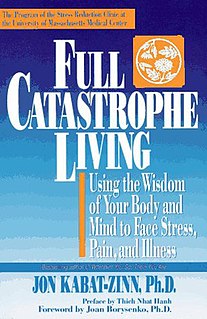 W
WFull Catastrophe Living: Using the Wisdom of Your Body and Mind to Face Stress, Pain, and Illness is a book by Jon Kabat-Zinn, first published in 1990, which describes the mindfulness-based stress reduction (MBSR) program developed at the University of Massachusetts Medical Center's Stress Reduction Clinic. In addition to describing the content and background of MBSR, Kabat-Zinn describes scientific research showing the medical benefits of mindfulness-based interventions (MBIs), and lays out an approach to mind-body medicine emphasizing the depth of the interconnections between physical and mental health. The book has been called "one of the great classics of mind/body medicine", and has been seen as a landmark in the development of the secular mindfulness movement in the United States and internationally.
 W
WGalileo's Middle Finger is a 2015 book about the ethics of medical research by Alice Dreger, an American bioethicist and author. Dreger explores the relationship between science and social justice by discussing a number of scientific controversies. These include the debates surrounding intersex genital surgery, autogynephilia, and anthropologist Napoleon Chagnon's work.
 W
WA History of Medicine is a book by Scottish surgeon Douglas Guthrie that was published in 1945 by Thomas Nelson and Sons. It came to wide attention after it was reviewed by the playwright George Bernard Shaw and marked the beginning for Guthrie of a new career in teaching the history of medicine.
 W
WHomœopathy and Its Kindred Delusions is a work by Oliver Wendell Holmes, Sr., based upon two lectures he gave in 1842, Medical Delusions and Homœopathy. The work criticizes homeopathy, which he considered to be akin to "astrology, palmistry and other methods of getting a living out of the weakness and credulity of mankind and womankind". It is considered to be a classic text, one of Holmes' most important works, as well as one of the earliest criticisms of homeopathy.
 W
WHow Doctors Think is a book released in March 2007 by Jerome Groopman, the Dina and Raphael Recanati Chair of Medicine at Harvard Medical School, chief of experimental medicine at Beth Israel Deaconess Medical Center in Boston, and staff writer for The New Yorker magazine.
 W
Win-Training: Stories from Tomorrow’s Physicians is a print collection of 102 manuscripts originally published on in-Training, the online magazine for medical students, since its founding in July 2012. The collection was written, curated, and edited entirely by medical students.
 W
WKaitai Shinsho is a medical text translated into Japanese during the Edo period. It was written by Sugita Genpaku, and was published by Suharaya Ichibee (須原屋市兵衛) in 1774, the third year of An'ei. The body comprises four volumes, the illustrations, one. The contents are written kanbun-style. It is based on the Dutch-language translation Ontleedkundige Tafelen, often known in Japan as Tafel Anatomie , of Johann Adam Kulmus’ Latin Tabulae Anatomicae, published before 1722 in Gdańsk, Polish-Lithuanian Commonwealth. As a full-blown translation from a Western language, it was the first of its kind in Japan.
 W
WThe Know-How of Face Transplantation is a college-level textbook edited by Maria Siemionow that is 493 pages long. It was published in 2011 by Springer Publishing. Siemionow performed the first near-full face transplant in the United States, which is still extremely rare. Siemionow says that "30 have been done around the world."
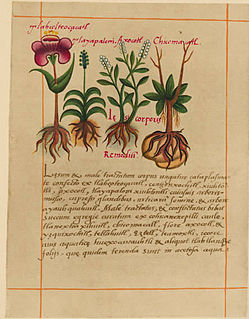 W
WThe Libellus de Medicinalibus Indorum Herbis is an Aztec herbal manuscript, describing the medicinal properties of various plants used by the Aztecs. It was translated into Latin by Juan Badiano, from a Nahuatl original composed in the Colegio de Santa Cruz de Tlatelolco in 1552 by Martín de la Cruz that is no longer extant. The Libellus is also known as the Badianus Manuscript, after the translator; the Codex de la Cruz-Badiano, after both the original author and translator; and the Codex Barberini, after Cardinal Francesco Barberini, who had possession of the manuscript in the early 17th century.
 W
WMedical Apartheid: The Dark History of Medical Experimentation on Black Americans from Colonial Times to the Present is a 2007 book by Harriet A. Washington. It is a history of medical experimentation on African Americans. From the era of slavery to the present day, this book presents the first detailed account of black Americans' abuse as unwitting subjects of medical experimentation.
 W
WMigrant Architects of the NHS: South Asian Doctors and the Reinvention of British General Practice (1940s–1980s), written by Julian M. Simpson, and published by Manchester University Press in 2018, is a book which combines archival research, images and interviews to tell the story of the physicians who immigrated to Britain from South Asia and became general practitioners (GPs) during the first four decades of Britain's National Health Service (NHS).
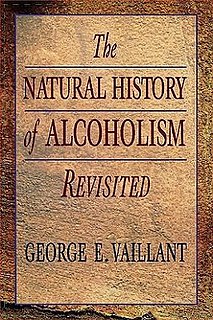 W
WThe Natural History of Alcoholism Revisited (1995) is a book by psychiatrist George E. Vaillant that describes two multi-decade studies of the lives of 600 American males, non-alcoholics at the outset, focusing on their lifelong drinking behaviours. By following the men from youth to old age it was possible to chart their drinking patterns and what factors may have contributed to alcoholism. Another study followed 100 severe alcoholics from a clinic eight years after their detoxification. The National Review hailed the first edition (1983) as "a genuine revolution in the field of alcoholism research" and said that "Vaillant has combined clinical experience with an unprecedented amount of empirical data to produce what may ultimately come to be viewed as the single most important contribution to the literature of alcoholism since the first edition of AA's Big Book." Some of the main conclusions of Vaillant's book are:That alcoholism is as much a social as a medical condition. "Alcoholism can simultaneously reflect both a conditioned habit and a disease." Factors predicting alcoholism were related to ethnic culture, alcoholism in relatives, and a personality that is antisocial and extroverted. An unhappy childhood predicted mental illness but not alcoholism—unless the family problems were due to alcoholism. That alcoholism was generally the cause of co-occurring depression, anxiety, and sociopathic (delinquent) behaviour, not the result. That even though alcoholism is not solely a medical condition, it is therapeutically effective to explain it as a disease to patients. The disease concept encourages patients to take responsibility for their drinking, without debilitating guilt. That for most alcoholics, attempts at controlled drinking in the long term end in either abstinence or a return to alcoholism. That there is as yet no cure for alcoholism, and that medical treatment can only provide short-term crisis intervention. Achieving long-term sobriety usually involves (1) a less harmful, substitute dependency; (2) new relationships; (3) sources of inspiration and hope; and (4) experiencing negative consequences of drinking.
 W
WThe Relaxation Response is a book written in 1975 by Herbert Benson, a Harvard physician, and Miriam Z. Klipper. The response is an autonomic reaction elicited by a simple, secular version of Transcendental Meditation ("TM"), a yogic meditation technique, presented for people in the Western world.
 W
WRook's Textbook of Dermatology is a leading textbook of dermatology published by Wiley. The ninth edition was published in 2016.
 W
WSide Effects: A Prosecutor, a Whistleblower, and a Bestselling Antidepressant on Trial is a nonfiction book by investigative journalist Alison Bass, which tells the true story of a court case and the personal drama that surrounded the making of a bestselling drug. It chronicles the lives of two women – a prosecutor and a whistleblower – who exposed deception in the research and marketing of Paxil, an antidepressant prescribed to millions of children and adults. The book shows the connections between pharmaceutical giant GlaxoSmithKline, a top Ivy League research institution, and the government agency designed to protect the public – conflicted relationships that may have compromised the health and safety of vulnerable children.
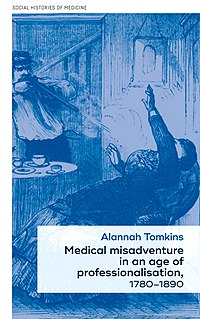 W
WSocial Histories of Medicine is a book series from Manchester University Press which covers "all aspects of health, illness and medicine, from prehistory to the present, in every part of the world". It runs in collaboration with the Society for the Social History of Medicine and is the third series that the society has been associated with after Studies in the Social History of Medicine (1989-2009) and Studies for the Society for the Social History of Medicine. The editors of the current series are David Cantor and Keir Waddington.
 W
WThe Spirit of Swiftwater: 100 Years at the Pocono Labs is a book written by Jeff Widmer and published in 1998 by the University of Scranton Press, Scranton, Pa. The book surveys the history of vaccine development in the United States from 1887-1987 through the eyes of the men and women who worked at what is now Sanofi Pasteur, the biologics division of Sanofi Aventis.
 W
WSurvival of the Sickest: The Surprising Connections Between Disease and Longevity is a 2007 New York Times Bestselling science book by Sharon Moalem, an evolutionary biologist and neurogeneticist, and Jonathan Prince, senior advisor and speechwriter for the Clinton administration. It was originally titled, Survival of the Sickest: A Medical Maverick Discovers Why We Need Disease.
 W
WThe Tennis Partner is the second of Abraham Verghese's books. Published in 1999, when he was a physician practicing internal medicine in El Paso, Texas, this is an autobiographical memoir, and Abraham Verghese writes of his experience moving to El Paso in the midst of an unraveling marriage. Once there, he meets and eventually becomes a mentor to David Smith, a medical resident at the hospital where Verghese worked and a brilliant tennis player recovering from drug addiction.
 W
WTrick or Treatment? Alternative Medicine on Trial is a 2008 book about alternative medicine by Simon Singh and Edzard Ernst.
 W
WThe Users’ Guides to the Medical Literature is a series of articles originally published in the Journal of the American Medical Association, later rewritten and compiled in a textbook, now in its third edition. The guides provide practical, clinician-friendly advice on all aspects of evidence-based medicine.
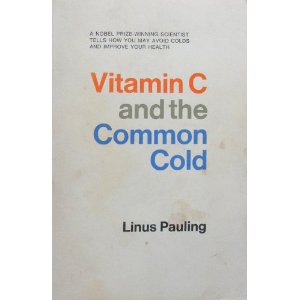 W
WVitamin C and the Common Cold is a popular book by Linus Pauling, first published in 1970, on vitamin C, its interactions with common cold and the role of vitamin C megadosage in human health. The book promoted the idea that taking large amounts of vitamin C could reduce the duration and severity of the common cold. A Nobel Prize-winning chemist and activist, Pauling promoted a view of vitamin C that is strongly at odds with most of the scientific community, which found little evidence for the alleged health benefits of greatly increased vitamin C intake. The book went through multiple editions, and a revised version that discussed the flu and other diseases, retitled Vitamin C, the Common Cold & the Flu, came out in 1976.